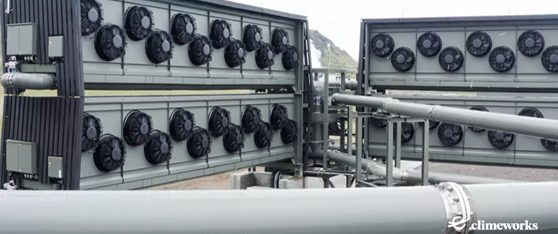deCarbonized #15: Carbon projects for sustainable development; Corporate governance of CDR

⛓ On-chain weekly carbon stats
Toucan Protocol is building carbon market infrastructure to finance the world's best climate solutions. These are our on-chain stats from 21.04- 27.04:

Stats explained...
- Bridged: Toucan’s Carbon Bridge allows anyone to bring carbon credits from legacy registries onto the Toucan Registry
- Traded: This figure represents the combined $ value of all trades in the Base Carbon Tonne (BCT) pool
- Redeemed: Anyone can redeem carbon credits from the BCT or Nature Carbon Tonne (NCT) pool and pay a fee to specify the specific carbon tonne that they would like
- Retired: Redeemed BCT and NCT tokens can be retired and claimed as a carbon offset
🦜 Want to learn more about Toucan? Join us at our open office hours, taking place every Tuesday 12pm EST/ 6pm CET on Discord

📢 Top news
- Toucan Protocol becomes the first web3 based carbon market infrastructure venture to join the International Emissions Trading Association (IETA)
- Google's philanthropy arm donates $2 million to support the Integrity Council for Voluntary Carbon Markets
- Bahamas moves to establish a carbon credit payment system
- Recommendations of the Task Group on Integrity in Digital Carbon Markets are shared with the community

🌟 Feature flashback
Deep dive: The co-benefits of carbon credit projects
In previous editions of deCarbonized we featured 5 pieces on the co-benefits of carbon credit projects. We have now formatted these into one, long-form piece for your reading and sharing convenience✨
After briefly introducing what co-benefits are and the growing interest in their value, 4 key types are explored:
- 💁♀️ Gender equality
- 💵 Economic growth and job creation
- 🔥 Access to clean energy
- 🦚 Biodiversity
Each co-benefit is discussed in relation to their contribution to the sustainable development goals, the types of project they are commonly attributed to and opportunities for their effective assessment. A case study of a project that has successfully produced the co-benefit is then explored. Enjoy!
We will return to our current feature on web3 for VCM pain points next week, focusing on regulatory oversight and market transparency 🕵️♀️

💼 Jobs board
- Research Associate, Clean Prosperity - Canada remote
- Consultant & Project Manager Carbon Offsetting, Meo Carbon Solutions - Cologne, Germany
- Principal Recruitment Consultant - Carbon Markets, Acre - New York, US
- Specialist, Carbon Program, DroneSeed - Seattle, US
- Senior Innovation Manager, Southpole - Amsterdam, Netherlands
🔎 Research in focus
The influence of corporate governance on Carbon Dioxide Removal

Recent research published in Frontiers in Climate Journal explores how firms are effecting the emerging carbon dioxide removal (CDR) space.
Some 1,500 companies have now set net zero targets, with corporate engagement in CDR gaining substantial momentum. Indeed, Microsoft, Stripe and several other large firms have made high-level commitments to funding expensive but durable carbon removal solutions.
With net zero remaining ill-defined, the current governance of corporate CDR activity remains a 'wild west'. Engagement remains voluntary, fragmented and influenced by trends in preference around solution, finance approach and implementation strategy.
It is important to better understand how and why firm level decision making around CDR takes place, as this has implications for overarching industry and technology development.

Research demonstrates that as corporates formulating a business case for CDR are influenced beyond technological affordability, technology selection becomes an inherently ‘political’ act. This grants firms the ability to fundamental shape the structure and governance of the emerging CDR industry.
For example, vested corporate interests in specific technologies- such as a fossil fuel company's interest in direct air capture for enhanced oil recovery- may influence the scale at which this specific solution is realized.
This can have physical implications (for example for local communities, or regional resource use), and political implications, allowing corporates to shape the paradigm under which CDR is used (in this case enabling ongoing fossil fuel use).

This influence will likely be challenged over time, as industry development will be required to consider the needs of different countries and populations. Without this awareness and oversight of real world impact, CDR's role in meeting global climate change targets could be called into question.
Therefore, while corporates are well positioned to accelerate CDR technology development (by investing in the development of, and guaranteeing demand for, solutions) the political influence of these actors cannot be ignored.
To account for this, research suggests that several solutions should be explored:
- Net zero commitments could be standardized across organizations, creating a clearer vision for the role of CDR in corporate decarbonization efforts
- Robust, standardized measurement and accounting protocols could be developed and made available to all corporates engaging in CDR activities
- Researchers and policymakers could engage more directly with corporates to understand their motivations and internal decision-making structures
You can read the full article here.

Thank you for reading deCarbonized! 👏
Reach out to us on social and join the community ✨
Suggestions on what to cover next? Let me know @DrHolWat

